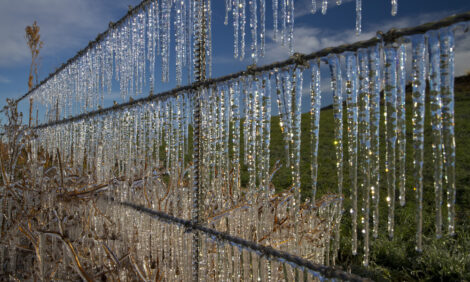



Stacking The Odds With AI
Cattlemen know genetic change is a slow process, especially when compared to other species. That should be enough motivation to think about stacking genetics, says Aaron Arnett, Select Sires vice president. Bull selection is only half the equation.
“Even the best set of sires mated to a group of poorer cows will not produce calves that hit the high-quality targets with any consistency,” he says.
Missouri’s Show-Me Select programme provides a test case. After all, its main focus is on using timed artificial insemination (TAI) to produce predictable females. After more than a decade, that has translated into an elite reputation as the go-to source of top-notch replacement heifers.
When the right sires are chosen, the results are just as outstanding in the feedyard and on the rail.
The Show-Me steer mates are setting quality records, one recent load making the news with 86.8 per cent Certified Angus Beef (CAB) and CAB Prime acceptance.
“We’re helping producers put together these puzzle pieces,” says David Patterson, University of Missouri animal scientist who spearheaded the original programme. “Timed AI is only the first step, because a wrong sire choice means they’re just breeding cows, not adding measureable value.”
In the university’s straightbred commercial Angus herd, they’re tracking that monetary incentive.
When pasture-bred calves are breaking even, progeny of high-accuracy AI sires are making $60-per- head profit.
Mr Patterson says that’s a result of pairing those value-added females with high-accuracy sires known for calving ease, marbling and carcase weight.
“Everybody knows inputs have increased remarkably, relative to selling commodity calves,” he says. “We have to figure out how to get more out of each calf crop we’re producing.”
Straightbreeding may be the easiest way to do that, but those practicing it need a specific target, Patterson says. Otherwise they may be giving up the heterosis benefits of crossbreeding without the tradeoff in high-quality beef premiums.
“Nothing is better for consistent, highly predictable outcomes than a cowherd with pedigrees stacked for a desired trait or combination of traits,” Mr Arnett says. “When proven AI sires are mated in such a herd, the results will be impressive, worth retaining ownership and selling those calves on the grid.”
That’s more difficult to accomplish with crossbreeding, which Mr Arnett still advocates in most cases.
Mr Patterson points out one potential downfall, however, even with high-accuracy Angus calving-ease genetics on Continental-cross heifers: “Birth weight in the calves from those heifers becomes a complete wild card—for better or worse, heterosis begins at conception.”
If producers are looking to set an end-product goal, Mr Patterson has one in mind.
“The Certified Angus Beef programme sold 775 million pounds of product this year and will need a billion pounds by the year 2020. That’s 3.5 million cattle; that’s an opportunity for those who can meet the demand,” he says.



